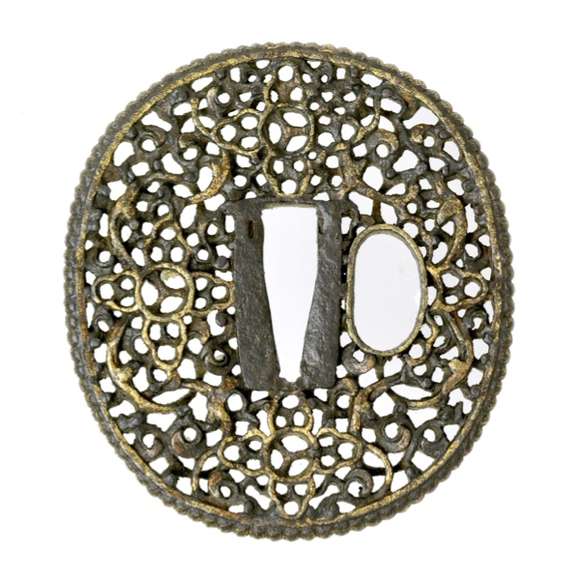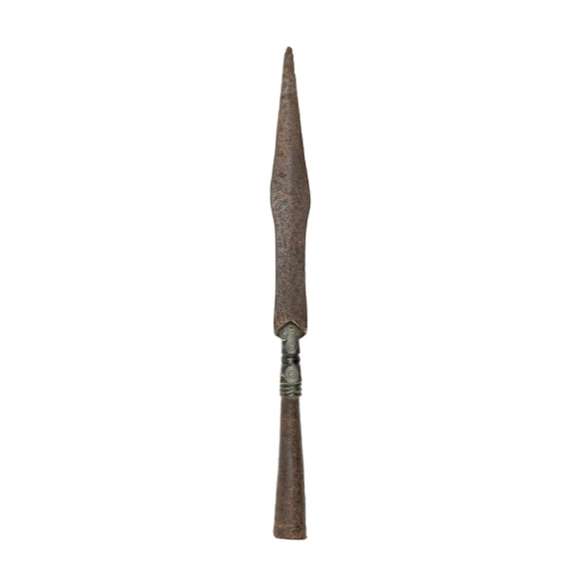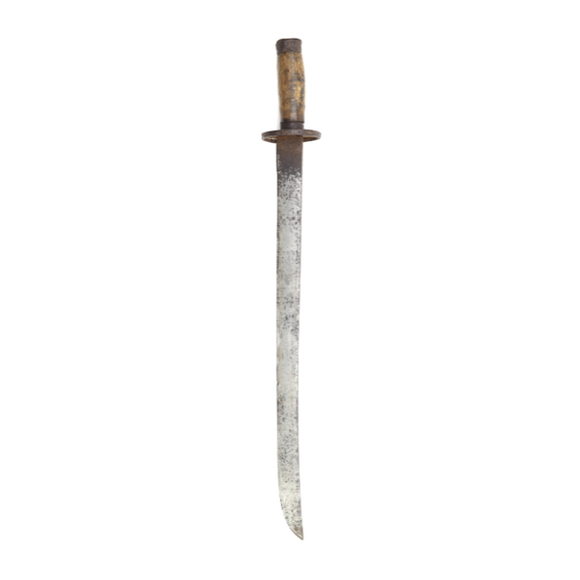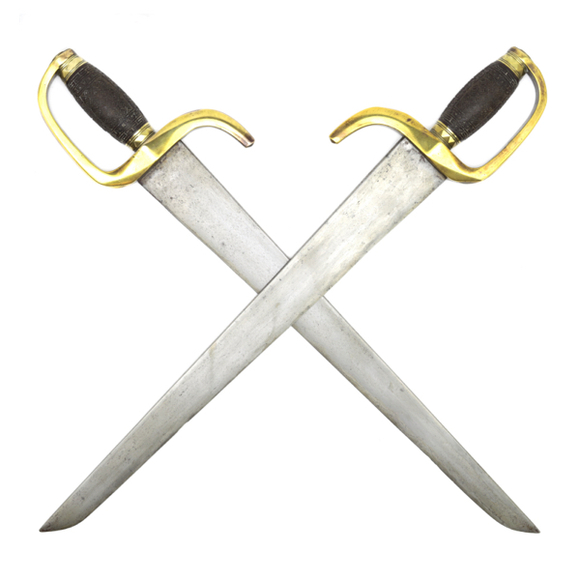A very rare Chinese saber guard dating from the height of the Qing dynasty.

59.1 cm / 23.3 inch (left)
59.1 cm / 23.3 inch (right)
57.3 cm / 18.6 inch (left)
57.3 cm / 18.6 inch (right)
forte 13.5 mm
middle 10 mm
near tip 4 mm
forte 14 mm
middle 10 mm
near tip 4 mm
forte 35 mm
middle 25 mm
near tip 14 mm
forte 34 mm
middle 23.5 mm
near tip 13
904 grams (right)
883 grams (left)
8.7 cm from guard (left)
9 cm from guard (right)
Qing dynasty, China
Iron, steel, brass, bronze, hardwood.
1850's - 1860's
Introduction
The hudiedao (蝴蝶刀), are a type of double swords peculiar to the port cities of southern China. They are also known in the local Cantonese dialect as bat jam do or "eight cutting knives". (八斬刀, pronounced bāzhǎndāo in Mandarin) The type seems to have emerged in the mid 19th century, as a merging of typical Chinese fighting knife blades with handles inspired by western naval sabers and entering knives, their defining feature. They typically have half-hilts that fit in a single scabbard side-by-side and can be drawn as if they were one weapon.
Their blades come in several varieties, the most common among antiques are long, thick but narrow blades with a subtle back bevel and sharp tip. Another common type has shorter, wider but thinner blades with clipped tips. This is the type that is most popular today among martial artists. Several other varieties exist, among which sets with curved blades with raised back-edges, and several variations that follow blades styles of southern ethnic minorities.
My understanding is that the heavy, narrow type is capable of delivering heavy cuts and deep thrusts, making it a lot more lethal, As such, it was more likely to have been used by local militia and the military who were allowed to kill in some circumstance. The wider, thinner version now popular under martial artists is much more suited for disabling the opponent while trying to avoid killing him. I think this explains their continued popularity into modern times.
Although neither the name hudiedao nor bazhandao turns up in military texts, many units were listed that used shuangdao(雙刀) which could mean anything single edged. We know that parts of the Qing army were allowed to use their own regional variations of weapons, and it could well be that the shuangdao of the north was a double conventional saber -as seen in the regulations- but that of the south may have been at some point substituted with what we now know as a hudiedao, a weapon more adopted to combat in the confinement of ships.
A number of single, longer swords of identical shape have turned up with military markings attributing them to Green Standard Army units of Guangdong. I have one in my collection with markings attributing them to Green Standard Army units of Guangdong, in the 3rd year of Tongzhi, corresponding largely with our year 1863. Such single swords were usually used in conjunction with a rattan shield, as seen in period photographs.
This pair
A very good representative set of hudiedao. As a type, they are fairly common, but one doesn't often encounter this quality and condition among the genre. The set is built with two very thick blades, and despite their narrow profile, each weighs as much as a good full-length saber. The blades taper considerably to a sharp point, both have a subtle back bevel running from just over half the blade all the way to the tip. Blades are of good quality and remain in original, untouched condition. There is some edge damage from another weapon, primarily on the right weapon.
Their hilts comprise of heavy bronze D-shaped guards of characteristic form, that were used for hand protection and up-close punching. The D-guard's outer face has a beautiful center ridge, a sign of quality. The hardwood handles enclosed in the D-guards are carved with auspicious flower baskets with a taotie face hidden in the flower. The design is carved over a background of swastika fretwork and framed with a greek key pattern. The work is very finely done, and in unusually high relief for this genre. The carving had two functions, one to provide grip, another function was talismanic; southern Chinese -like most sailing peoples- were known to be highly superstitious. The wooden handles are held between two brass ferrules with a ribbed finish.
The handle on the left piece is still very tight, that on the right is slightly loose from shrinking of the wood over time. There is a small but skillful repair near the pommel, see photos. The bronze guards have a beautiful deep, original patina.
Conclusion
An excellent example of a set of heavy southern fighting hudiedao, of a combat type used by militia and some military units. It has an unusual degree of depth and detail in the carved handles, and great quality mountings and blades. A great set for anyone who is looking for a solid representative set of this type.
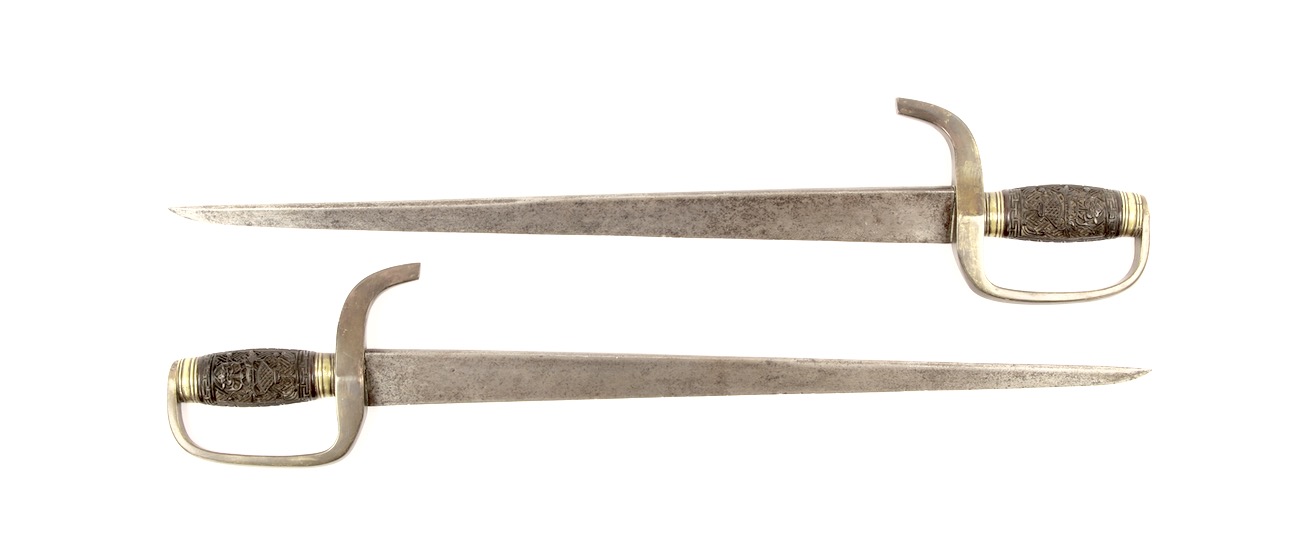
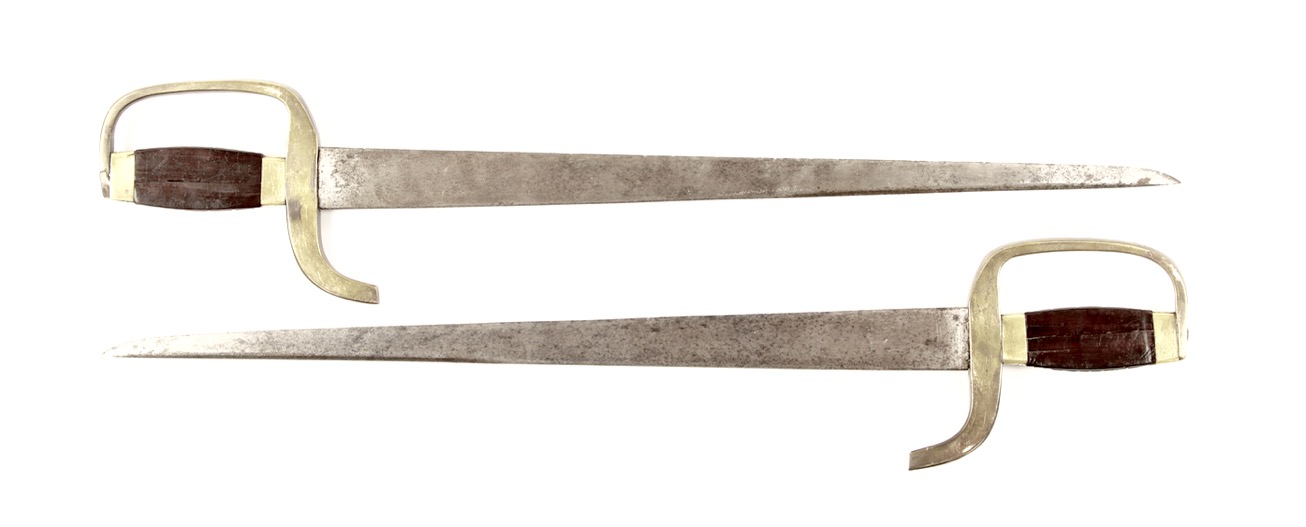

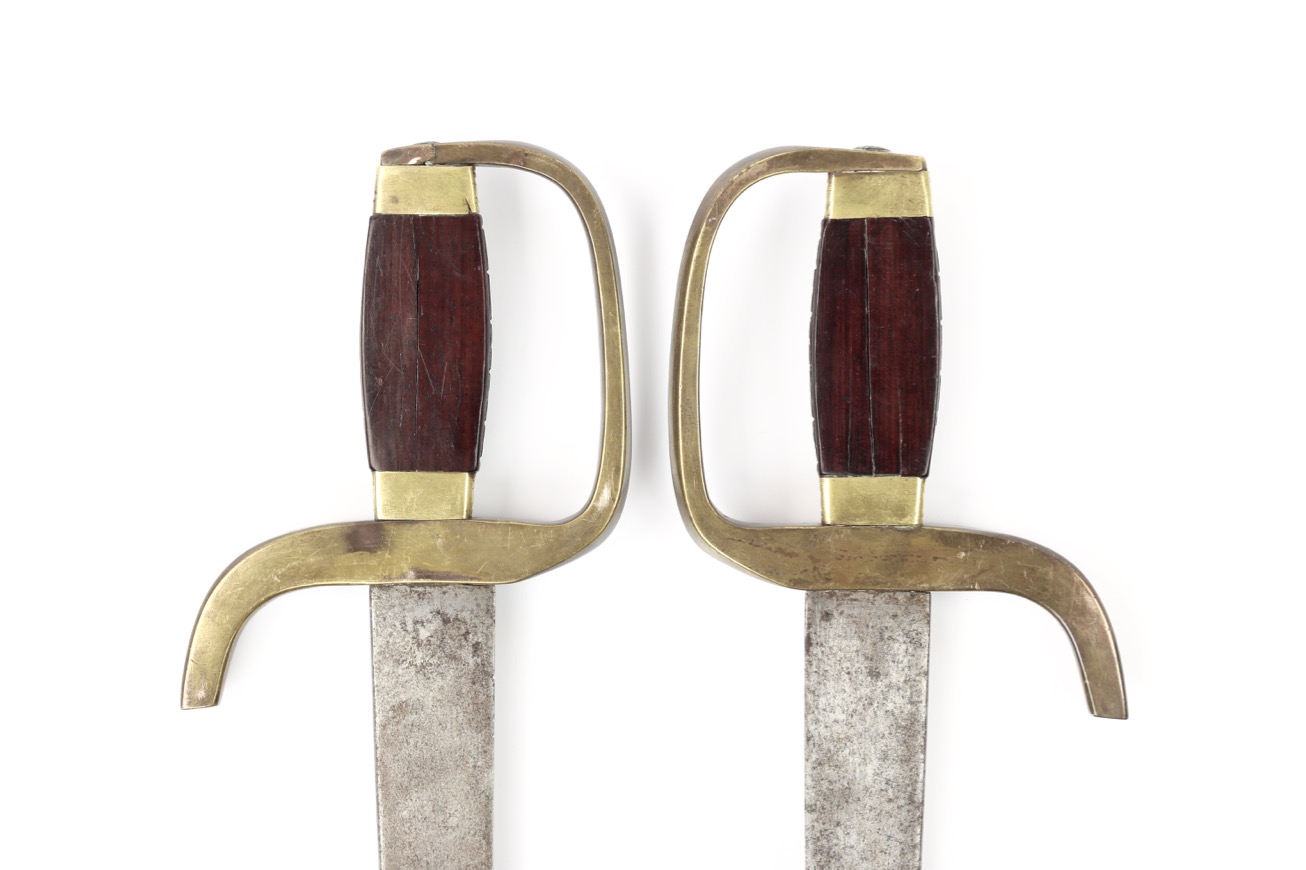
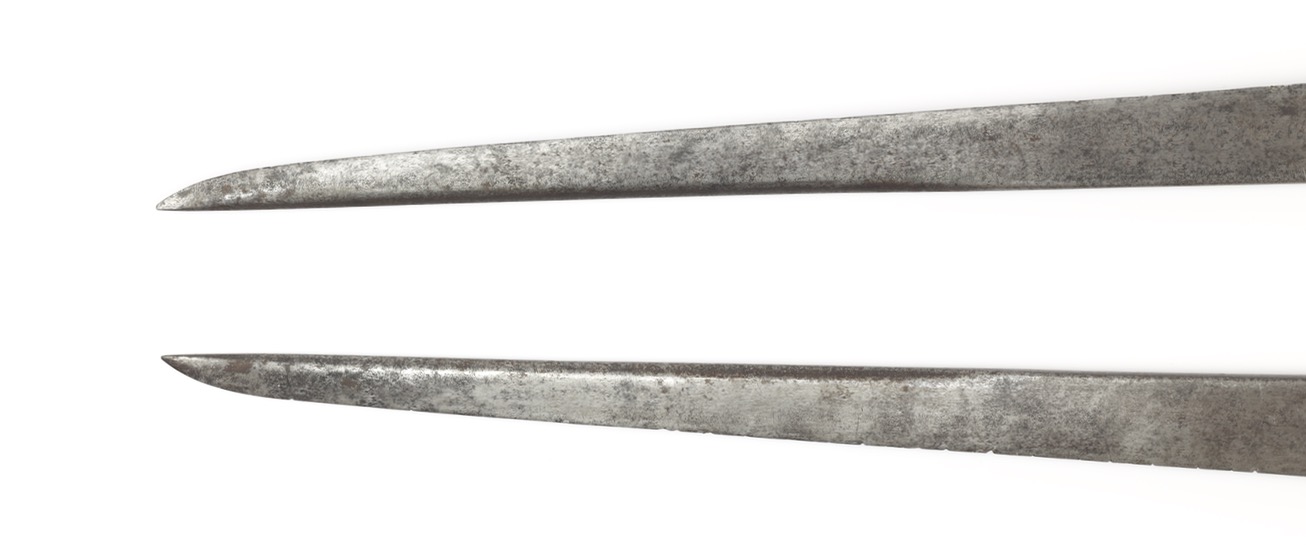
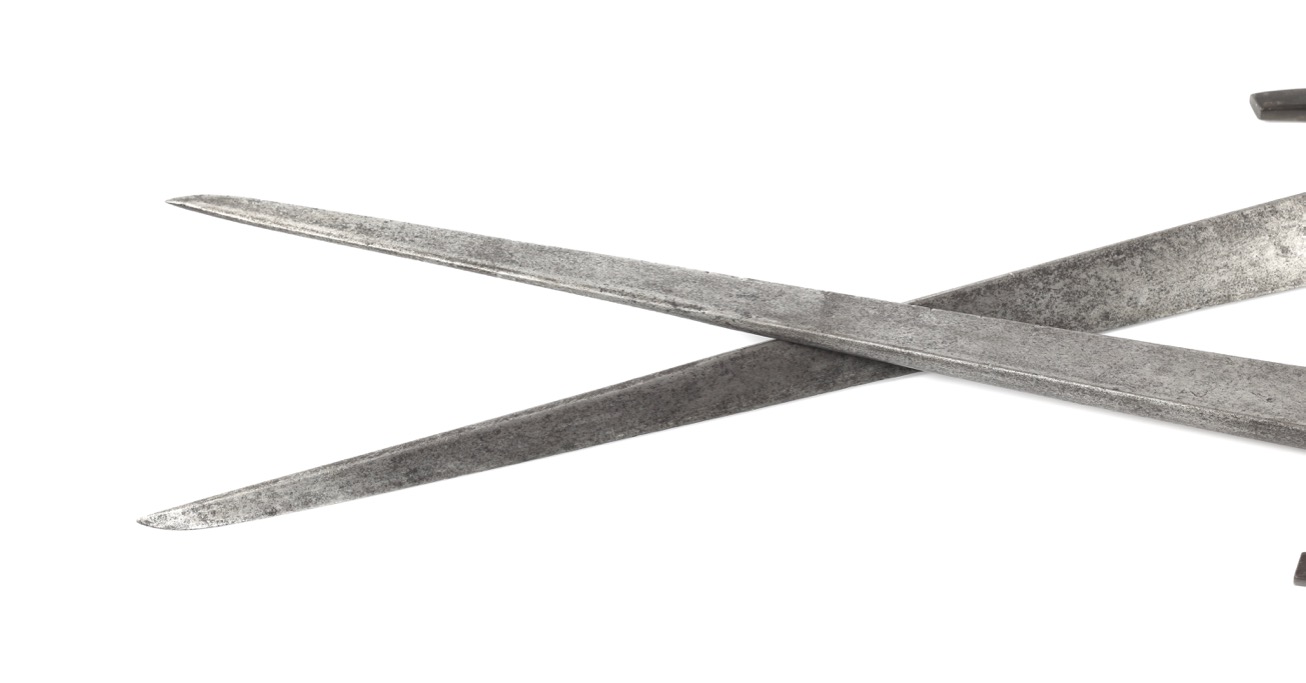

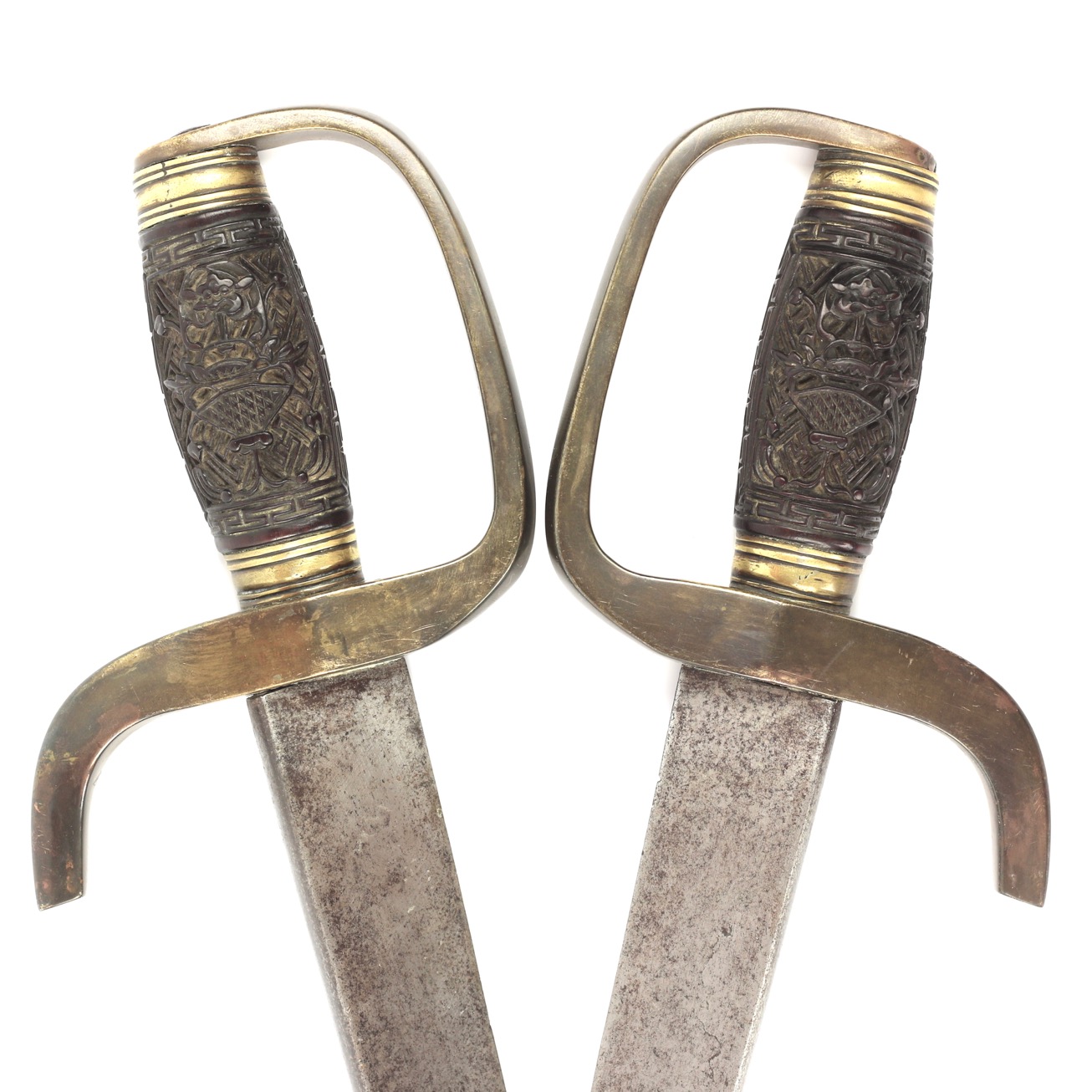
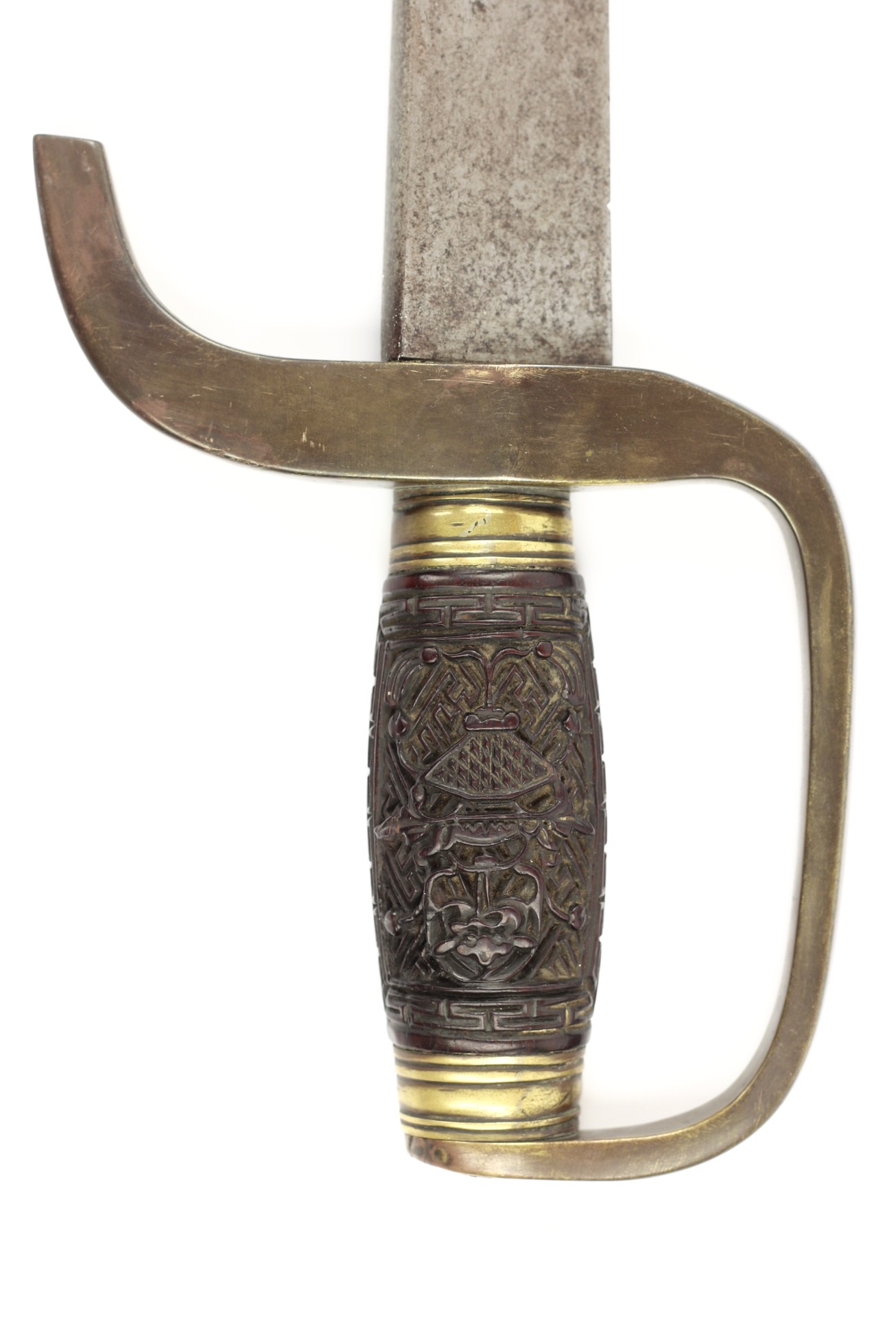
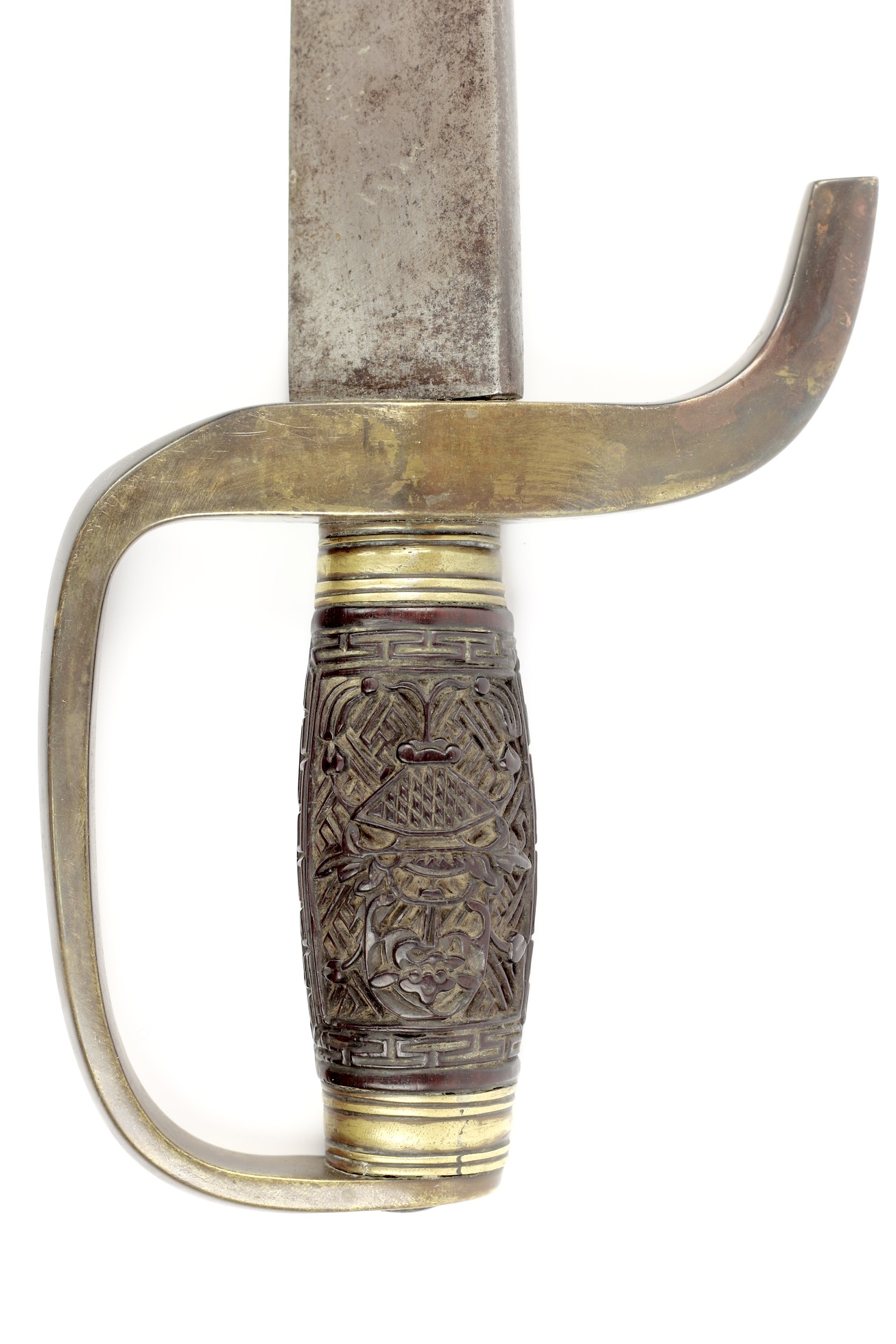

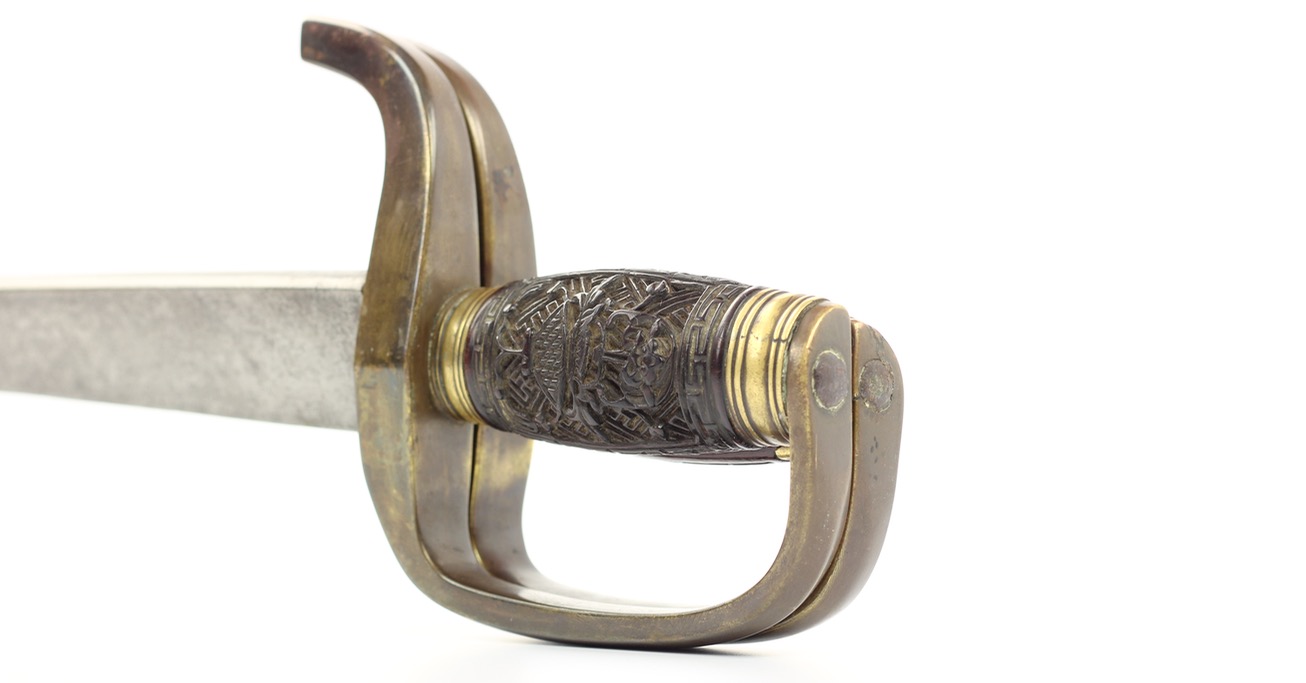


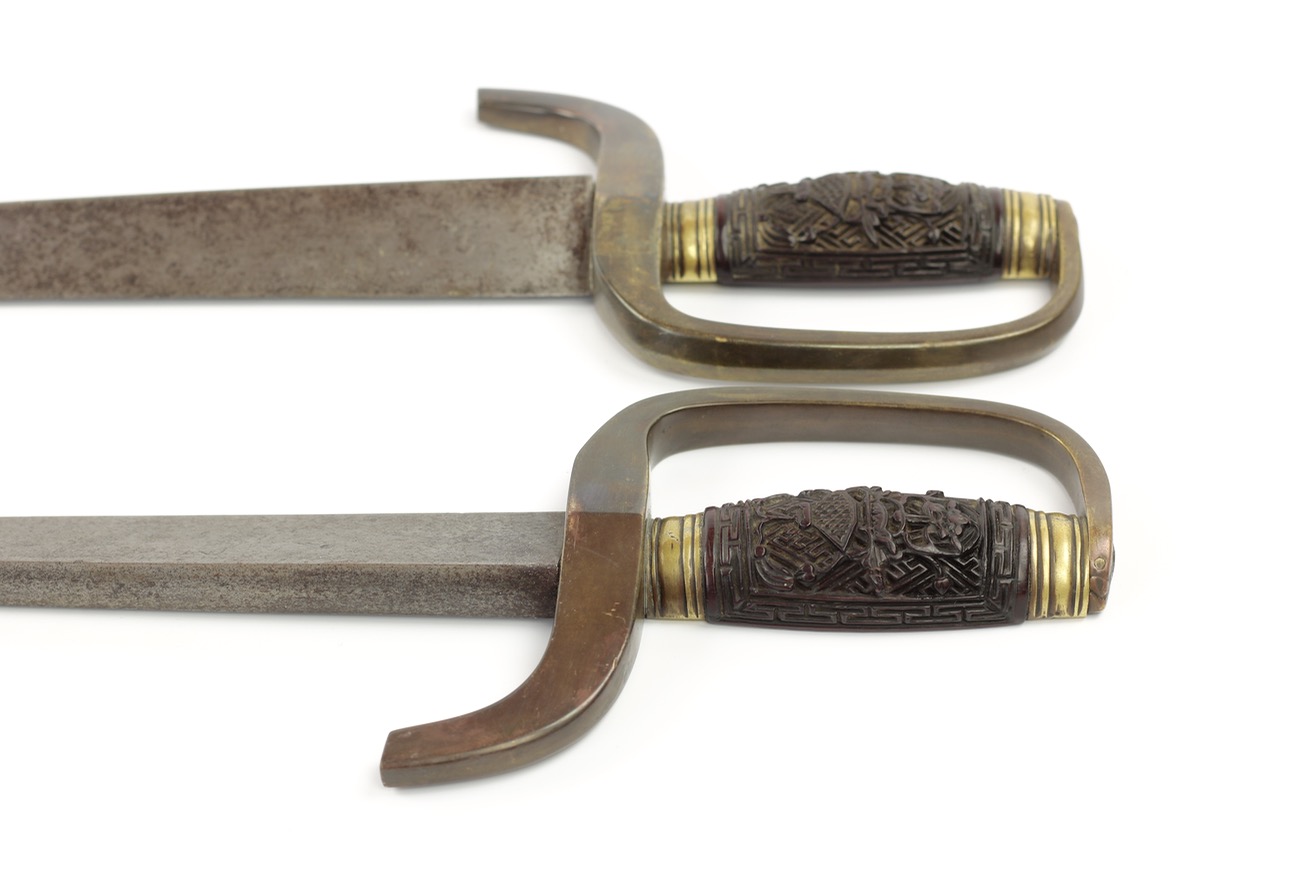


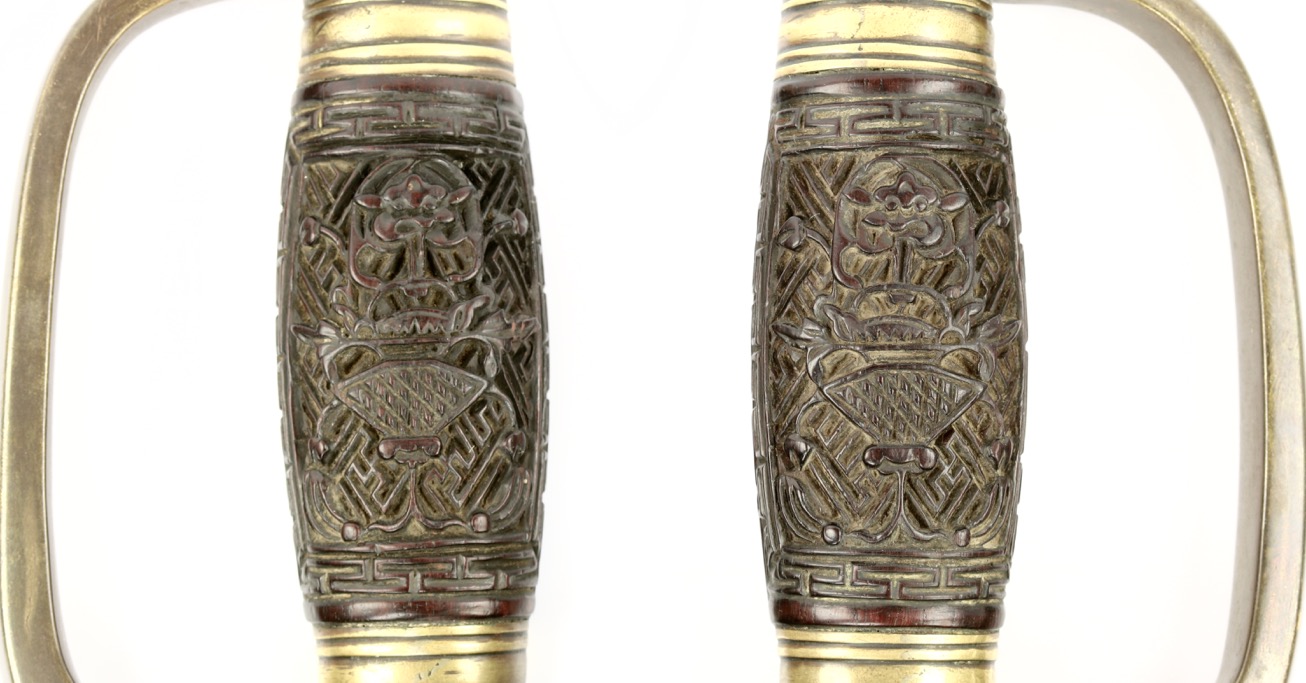
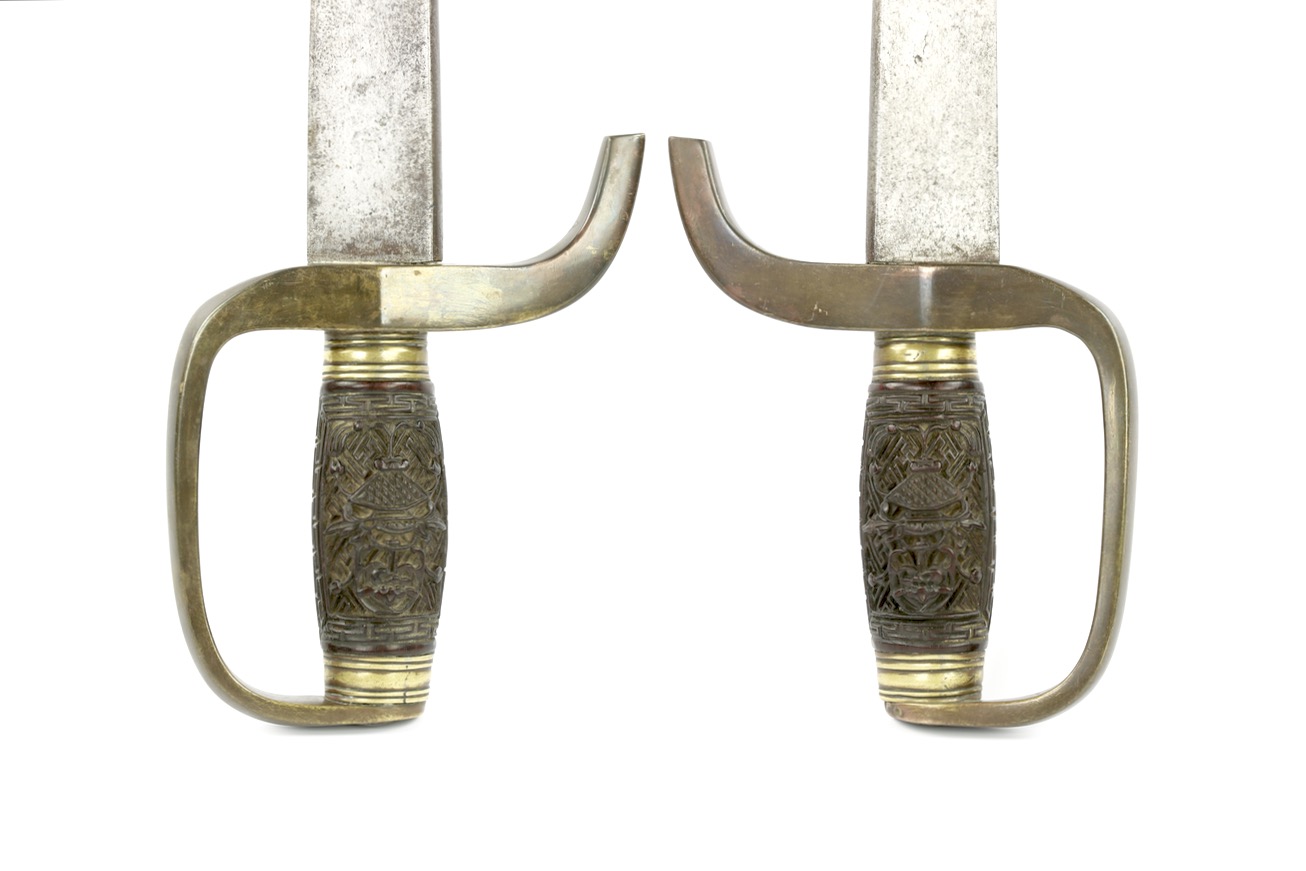
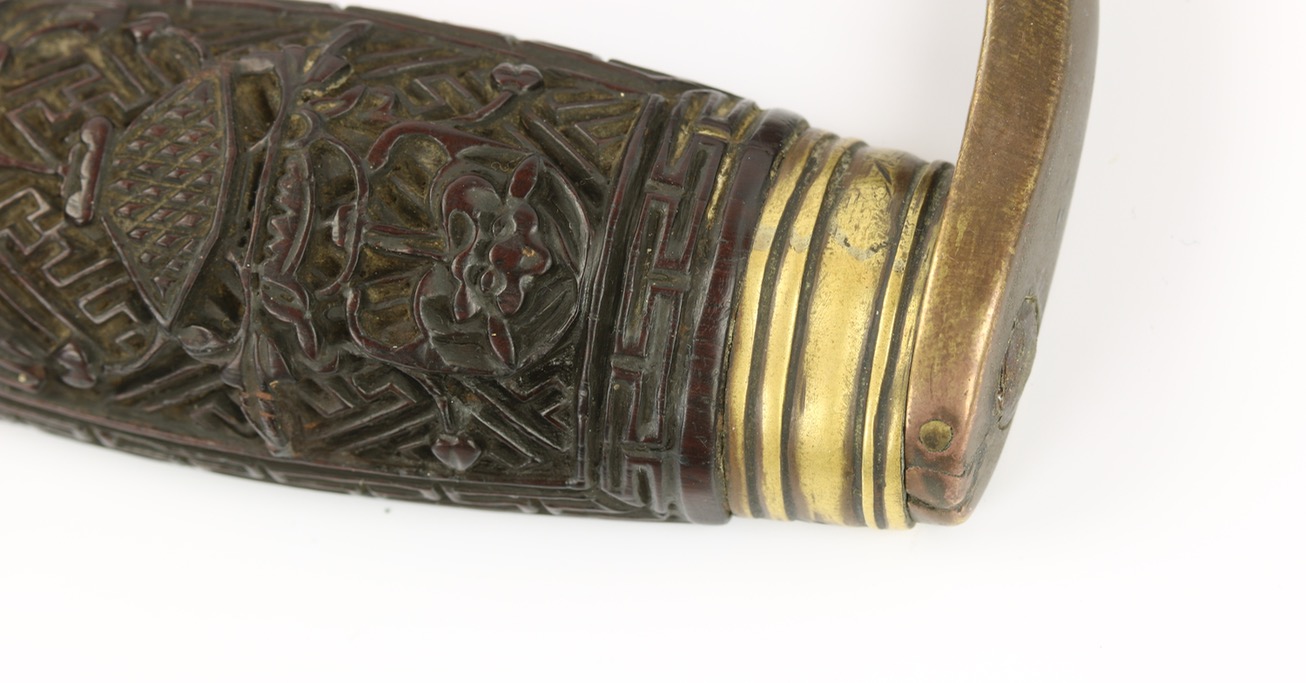


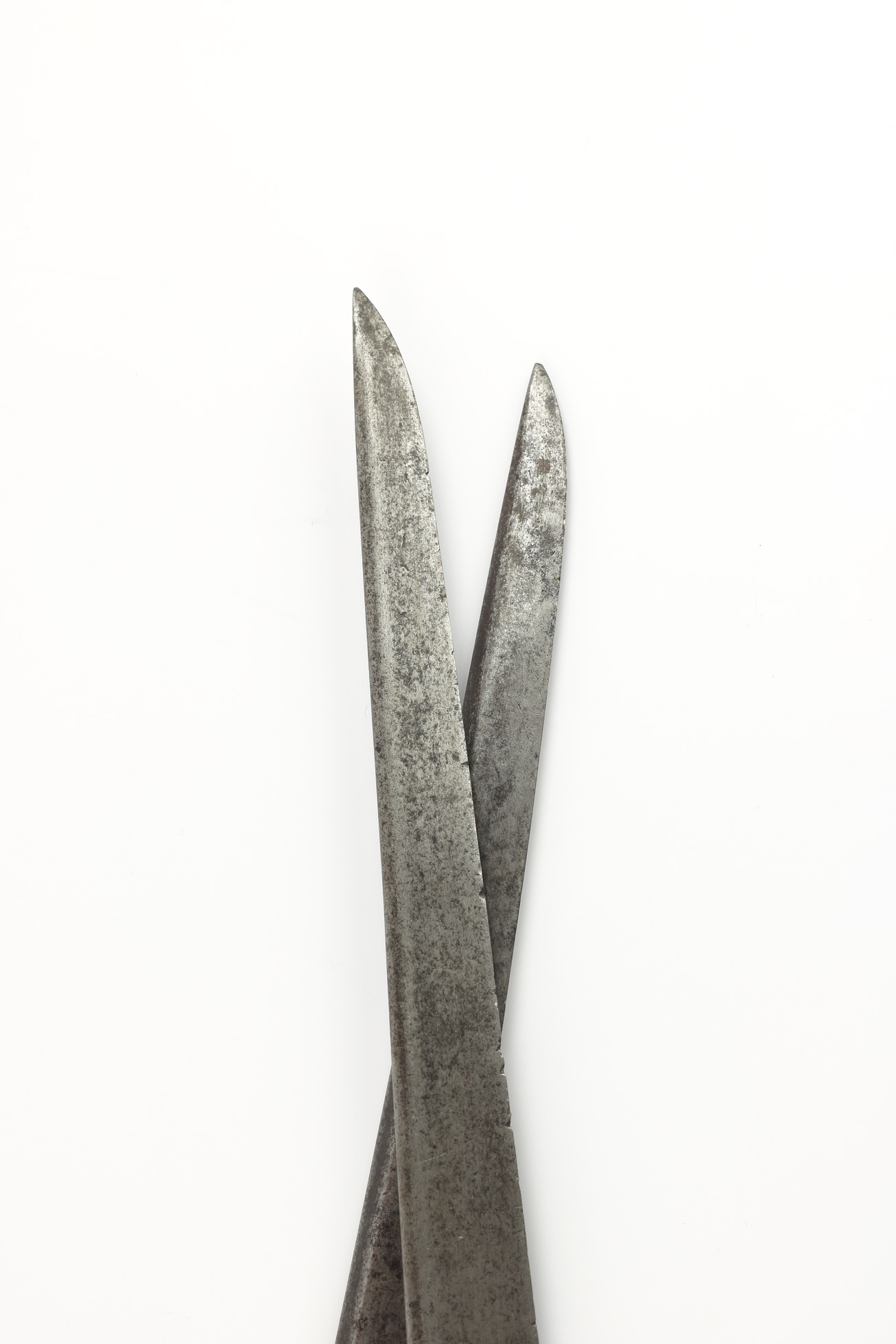
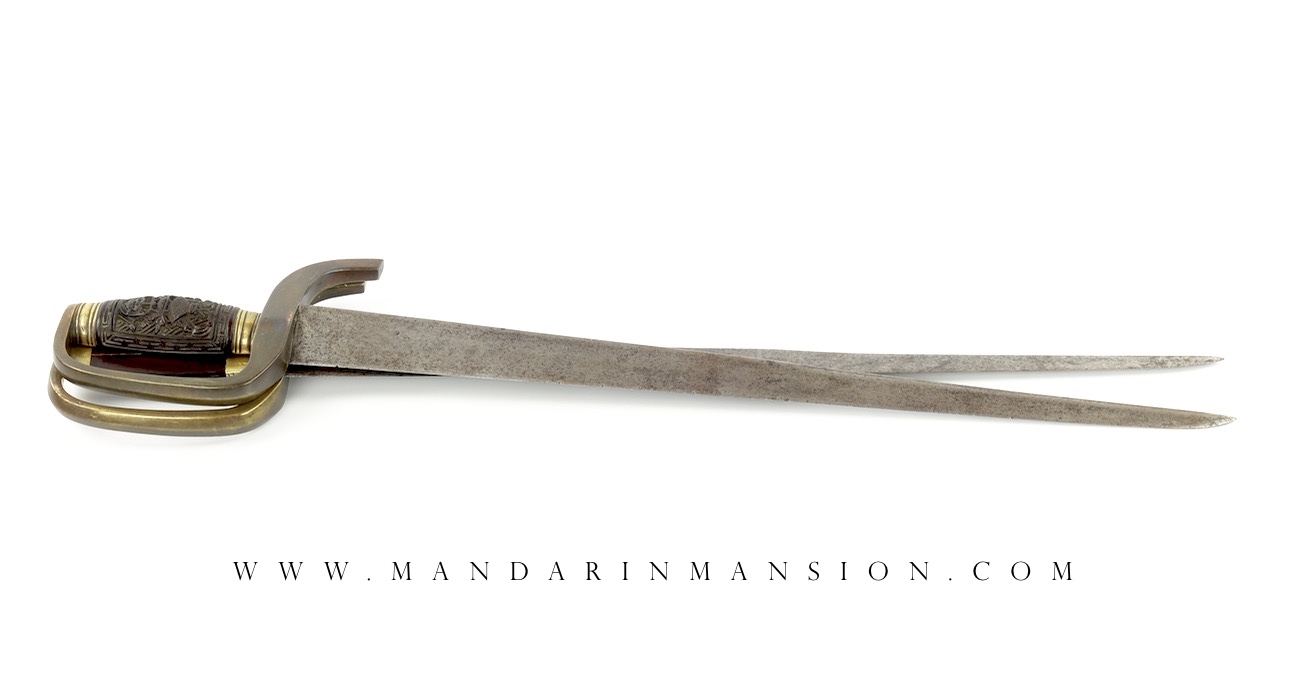
Of classic shape, with a leaf-shaped blade on a socket, connected by a cast bronze base.
A standard pattern Qing military saber, but with the rare addition of a label in Manchu.
A simple utilitarian weapon, probably made for rural martial artists or militia.
Wide-bladed pair with eccentric hilt features. Complete with scabbard.
A set of the rarer long and wide variety with very well-carved hilts and good overall finish.

